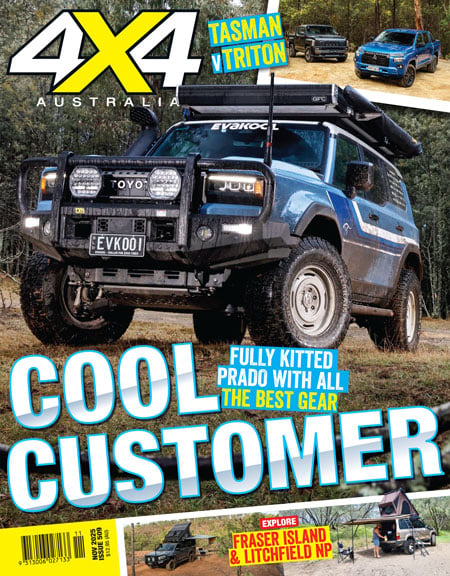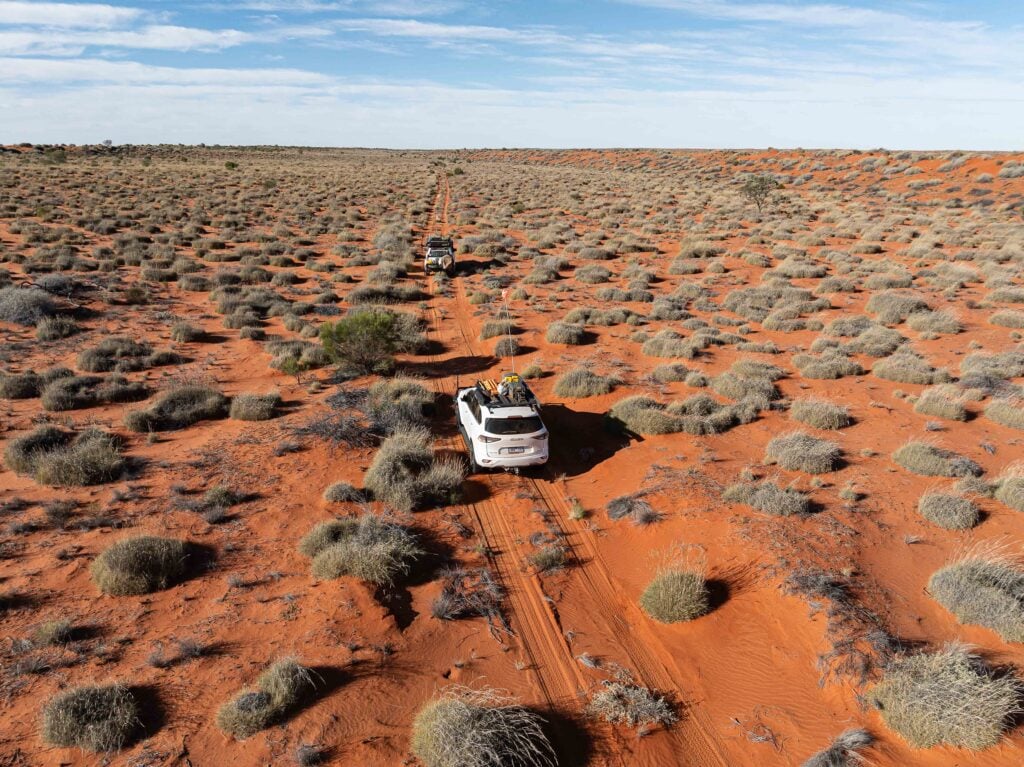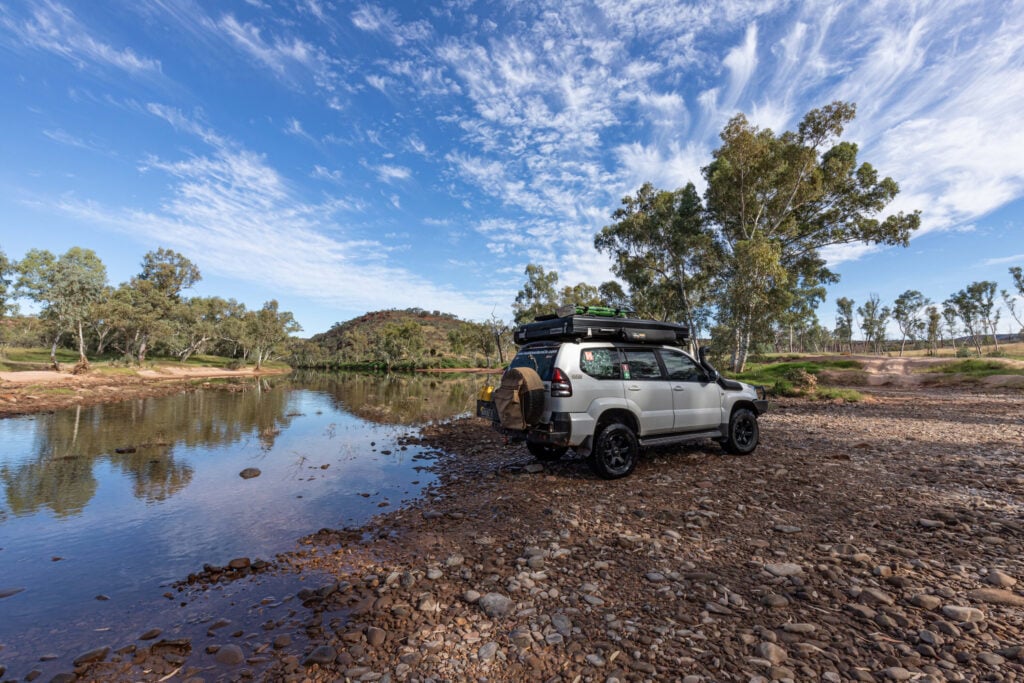Explorer John Stuart first sighted the sandstone column in 1860. Towering 50m above the surrounding plain, he decided to name it after a mate who contributed to Stuart’s travel fund, James Chambers.
It has remained a significant landmark on the edge of the Simpson Desert ever since and many passers-by have tagged the rockface as a record of their visit. Thankfully, this practice is no longer permitted, as seeing ‘Craig & Shazza’ carved next to ‘WM HAYES’ just doesn’t look right.
Alice Springs is the hub of the Red Centre and is a great place to fuel up, stock up and wash up. On leaving Alice, follow the signs towards the airport and turn right onto Maryvale Road. The bitumen stretches for 35km now, much more than on my last trip this way, but that doesn’t make this adventure any less exciting as Chambers Pillar is an outstanding destination in the Red Centre. It is a spectacular site enjoyed by explorers, pastoralists and graffiti artists since Stuart first discovered it, and I was looking forward to revisiting it.
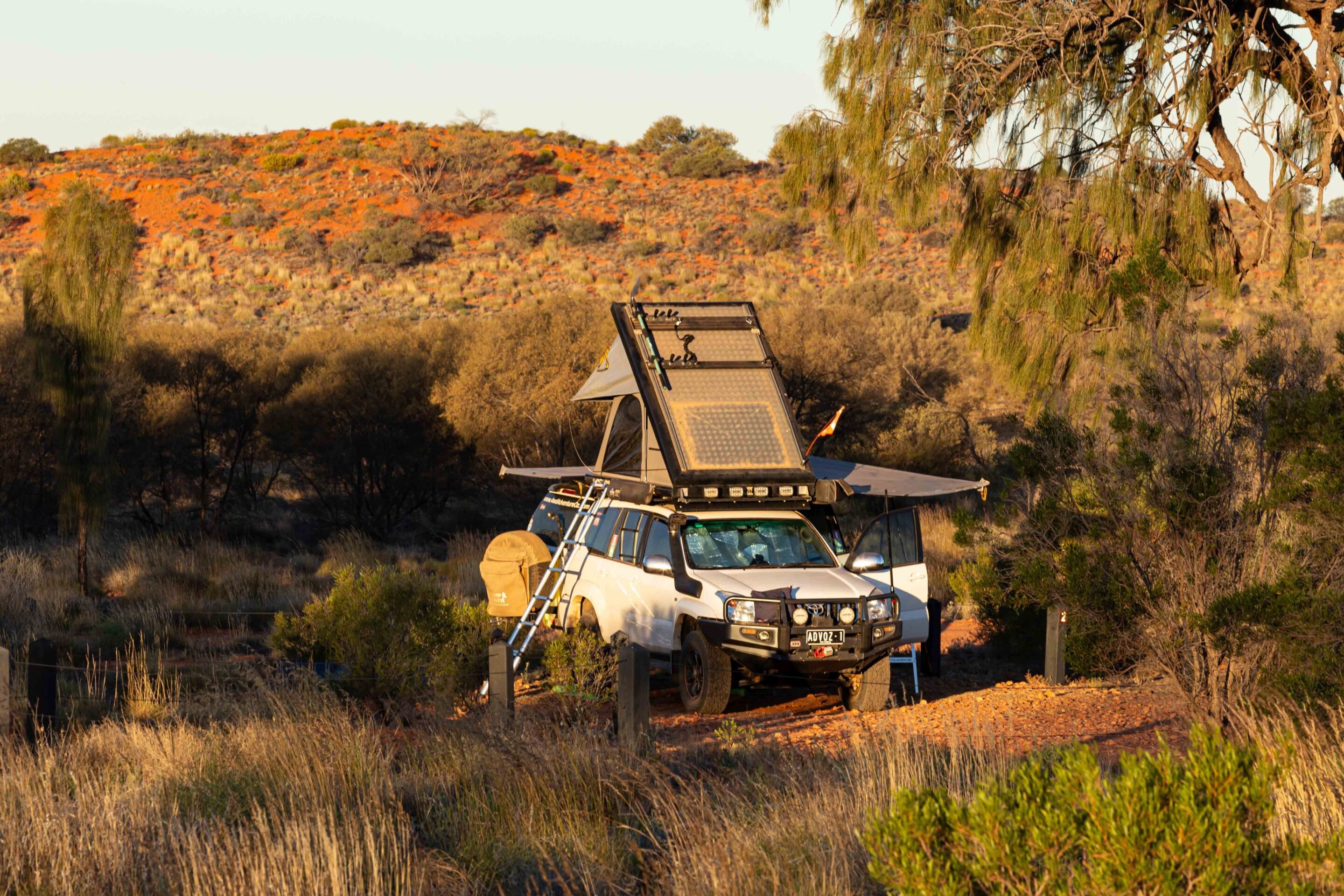
Following the Old Ghan: Maryvale Road to Chambers Pillar
The Maryvale Road follows the Old Ghan Railway through low-lying scrubland and rocky outcrops. The first train left Adelaide in 1891, but the railway line didn’t reach Alice Springs until 1929 and Darwin until 2001. You’ll find water towers and abandoned buildings along various stretches of the road, and you can almost picture yourself back in the days when riding the Ghan was an epic adventure – quite different from the silver service you would experience today.
You’ll pass through low-lying scrubland and rocky outcrops as the Maryvale Road also follows the Finke Desert racetrack, where Australia’s premier desert race takes place in June every year. It is one of the most demanding off-road races in the world for motorcycles, side-by-sides and trophy trucks. Once the blacktop ends, the unsealed road has a well-maintained hard base mainly because of the amount of traffic that travels this route these days.
It is recommended that you stop to explore the Napwerte/Ewaninga Rock Carvings, one of Central Australia’s earliest and richest art sites. The petroglyphs are a sacred site for senior Arrernte men, so photographs aren’t allowed. The marked 680m walk is graded as easy, and the best time to visit is in the early morning or late afternoon. Take your time and absorb the mystical vibe of this sacred place.
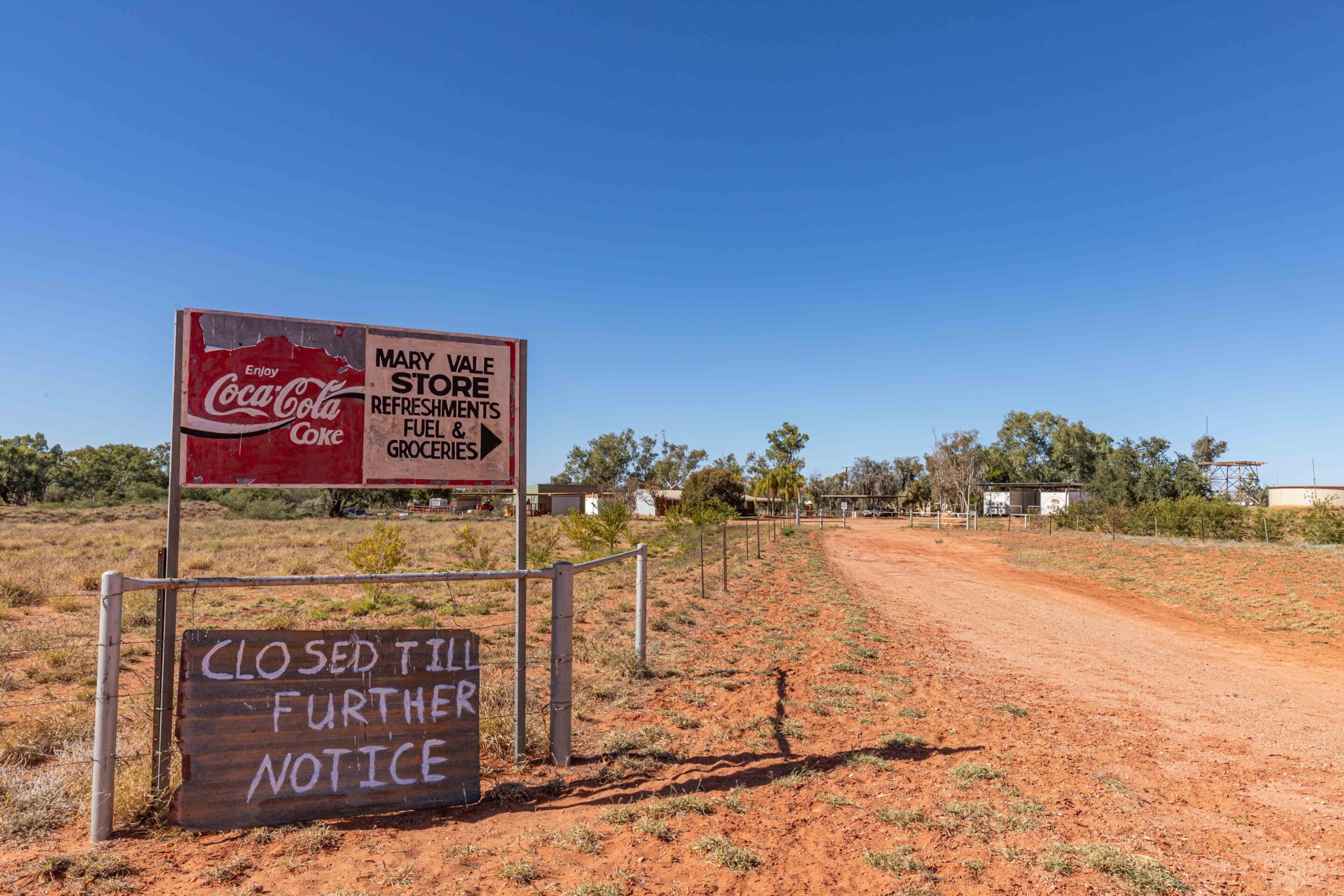
As you travel south on the approach to the turn-off to Deep Well Station, one of the region’s historic cattle stations, the landscape transitions into gibber plains and spinifex-covered sand dunes. I was fortunate enough to visit and stay with the Hayes family in 2006, as they were friends with my parents. It was wonderful to have the opportunity to experience pastoral life in this part of the outback.
The road crosses through the Deep Well Range before passing by the Hugh Stock Route, another way to access the Maryvale Road from the Stuart Highway, just south of Stuarts Well Roadhouse. The Hugh River crossing is a seasonal waterway that may have some water after rains.
From here, you’ll see scattered groves of desert oaks and mulga with 19km to the Chambers Pillar turn-off. Maryvale Station is a working cattle station with a store, but on this trip, there was a ‘Closed until further notice’ sign, which was disappointing. I was looking forward to an ice cream. Nearby is the small Titjikala Aboriginal community, which has a strong Arrernte cultural presence and is known for its Aboriginal art.
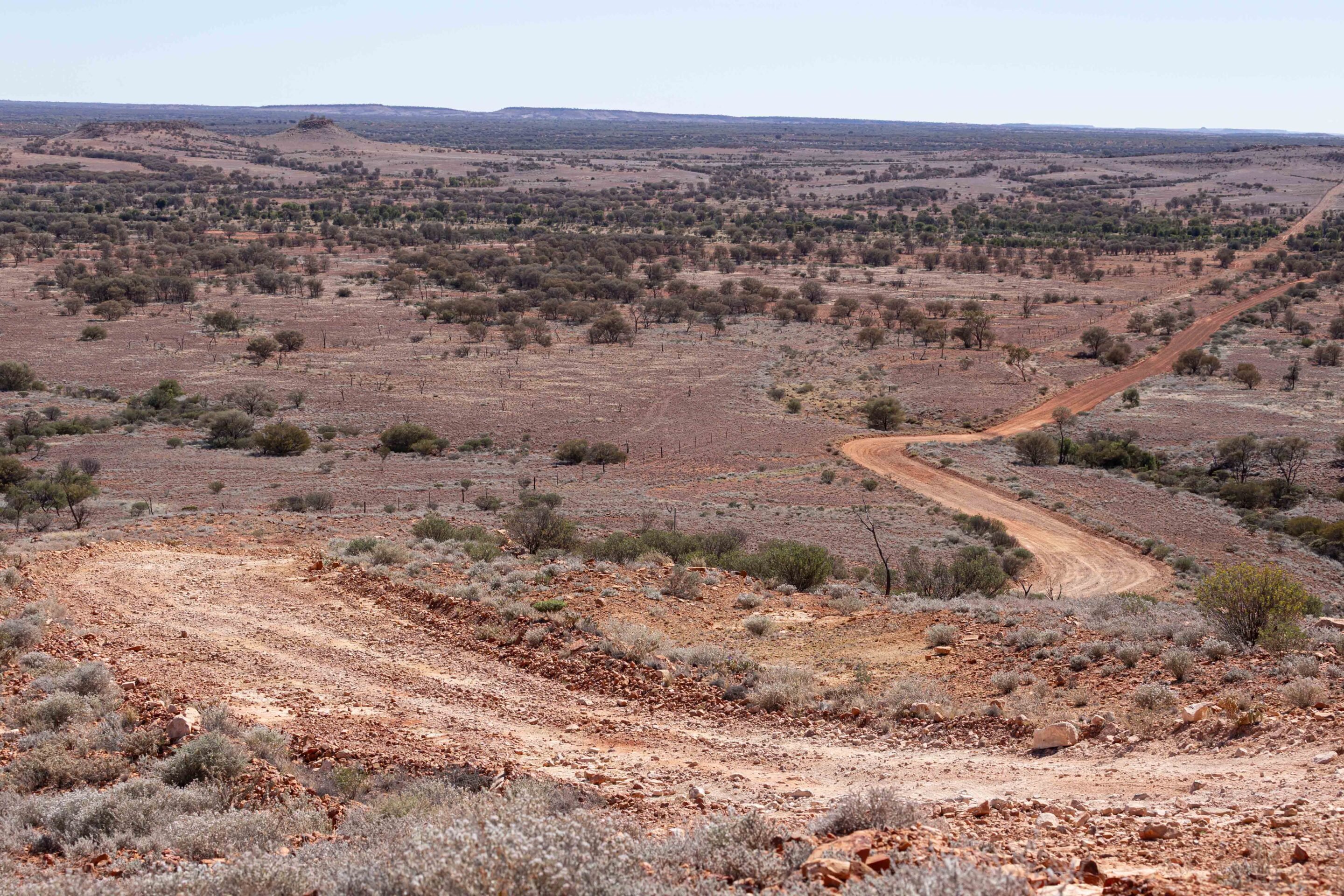
The road from Maryvale Station deteriorates a little, but it’s still a more leisurely drive than it used to be. There are some rough sections and deep sand at the dry water crossings, but it’s not a challenging drive along its 45km length. The landscape is broken with deep red sand dunes and occasional rocky escarpments. Keep an eye out for thorny devils scuttling across the track, well-camouflaged against the red dirt. You’ll see a sign asking for firewood to be collected over the next 3km, as wood cannot be collected within the Chambers Pillar Reserve.
The biggest challenge of the drive is crossing Charlotte Range, and traction control and low-range will prove beneficial in ensuring you get up there without damaging the track or your vehicle. The same goes for descending on the other side, which heads towards Chambers Pillar Campground. Then, you’ll reach a gate; please leave it as you find it.
Chambers Pillar: A Red Centre icon with ancient roots
The recommendation is to fit a sand flag due to the sand dunes on this stretch. If you don’t have one, turn on your lights and take care as you cross the dunes, as there may be oncoming traffic. The second gate accesses the Chambers Pillar Historical Reserve. An NT Parks Pass is required to enter the reserve, and sites must be pre-booked online if you intend to camp. There are two designated campgrounds provided, both with wood fire pits and pit toilets.
On the walk out to the Chambers Pillar, keep an eye out for bearded dragons, Centralian blue-tongued skinks and thorny devils; while you may not spot one, you will see their tracks in the sand. Climbing the sandstone steps to the pillar’s base reveals a vast array of names carved into the rockface, from early pastoralists and explorers to police and Overland Telegraph personnel, as well as 21st century adventurers who have also come to admire the impressive pillar. A walkway has been constructed to provide easy viewing of the rock and to safeguard the fragile sandstone from erosion. See if you can spot where explorer John McDouall Stuart carved his name.
The site holds great significance for the local Aboriginal people, who recount the dreamtime story of Itirkawara, the gecko ancestor. A towering figure, he had a fierce temper as well. During his travels, he killed several of his ancestors with a stone knife.
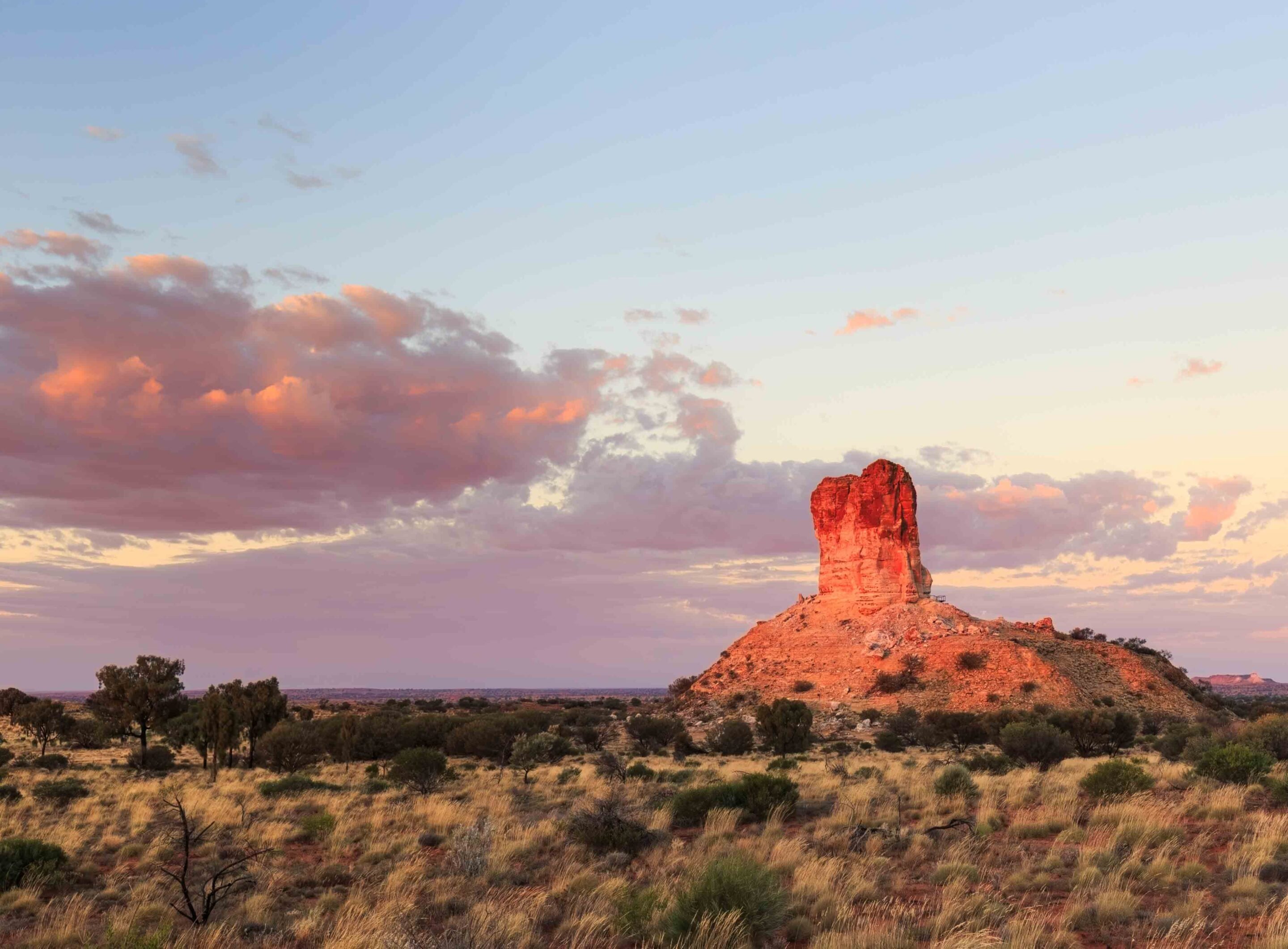
Confident in his strength, he took a wife from the wrong tribe, which angered his relatives. Banished, the couple returned to the desert, with Itirkawara seething and his wife overwhelmed by shame. They rested in the dunes, transforming into rocky formations: Itirkawara became the pillar and his wife evolved into Castle Rock.
In the morning, instead of waking to the sounds of Major Mitchell’s cockatoos or flocks of budgerigars, I was roused from my sleep by the ghastly sound of diesel heaters starting up in nearby camper trailers. Diesel heaters sound like jet engines, and they are becoming as bad as generators in the bush.
Sunrise at Chambers Pillar is a breathtaking spectacle, as the towering sandstone glows with deep reds, oranges and golds. The desert awakens in soft light, revealing spinifex dunes and ghost gums, while distant bird calls break the silence. As the sun rises, shadows stretch across the ochre sand, highlighting the rugged beauty of this ancient formation. It is a magical, unforgettable Red Centre experience.
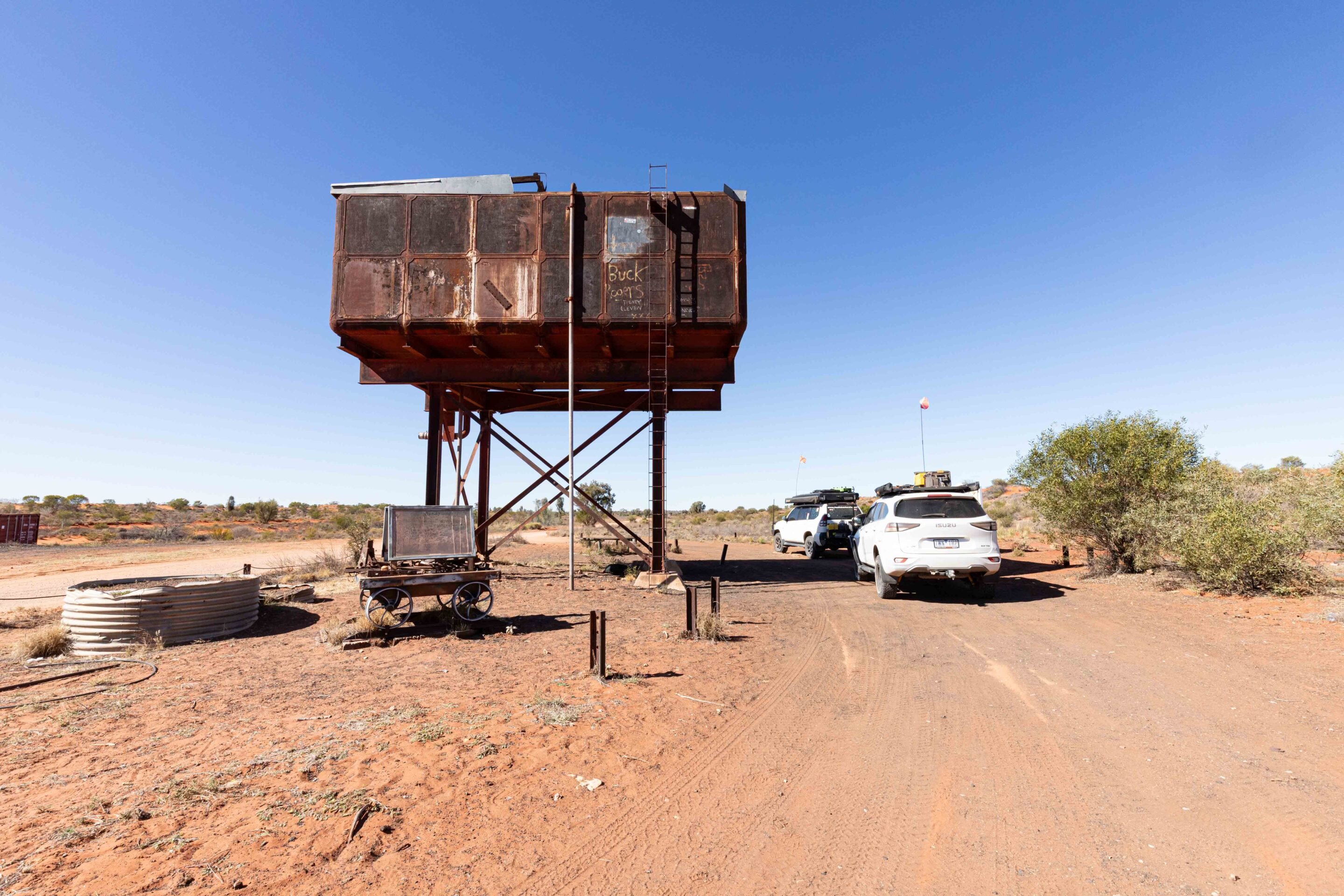
Retrace your steps to the junction of Maryvale Road and the Old Ghan Heritage Trail, turning right toward Finke. Nearby lie the ruins of Rodinga Siding, a heritage site set in a remote and arid landscape surrounded by red sand, spinifex and low scrub. The stone foundations and railway relics provide a glimpse into the Ghan’s rail history and make for an interesting stop.
From here, the track runs parallel to, and sometimes on top of, the old railway embankment; beware of the rusting railway spikes on the track. Moving south, you’ll come across several former sidings, such as Bundoona and Engoordina, which feature ruins and rusting water tanks that once serviced the steam trains. The remains of old railway bridges built to cross flood-prone areas are relics of a bygone era. Passing red sand dunes and scattered desert oaks, the track eventually crosses the Finke River, one of the world’s oldest river systems. The riverbed is usually dry but can flow after heavy rains. Ancient river gums line the banks, providing shade and a contrast to the surrounding desert.
Finke and the Lambert Centre: Heart of the Red Centre
Finke is a small Aboriginal community known for its rich Pitjantjatjara and Arrernte cultural heritage. It is also famous as the southern end of the Finke Desert Race. This is a great spot to refuel, grab lunch and explore a little local history before continuing to the Lambert Centre of Australia. Fuel is available 24/7, but the Aputula Store is closed between 1pm and 2pm on weekdays. It is best to call ahead to check opening times and fuel availability before you get there on (08) 8956 0968.
From Finke, it’s only 35km to the Lambert Centre, the geographical centre of mainland Australia. Take Finke Road and head towards Kulgera before turning north at the signpost. The narrow track is rough and splits in places as drivers seek a smoother route. Lowering tyre pressures made our drive more comfortable, and it wasn’t long before we reached the end of the track.
At the Lambert Centre, you’ll find a flagpole monument that resembles Canberra’s Parliament House flagpole… alongside a million friendly flies. Camping is permitted, and once the flies have gone, enjoy the peace, quiet and remoteness while viewing the stunning night sky. Our destination was somewhere else, though, the historic Old Andado.
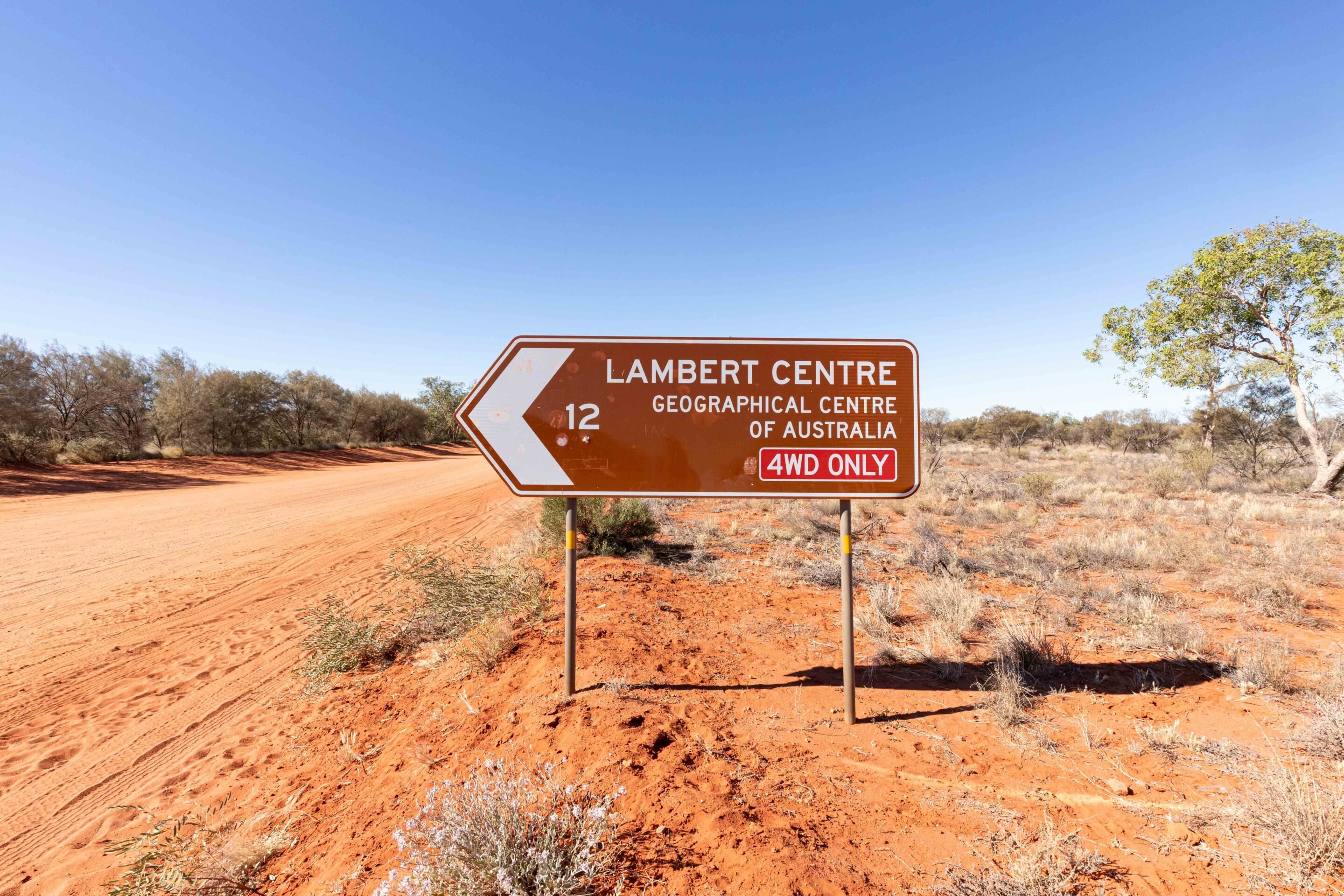
Old Andado: Molly Clark’s Outback Legacy
From Finke, the drive to Old Andado continues the remote 4×4 journey through the arid heart of the NT, covering approximately 120km of rugged desert terrain. The track takes you through red sand dunes, mulga scrub and gibber plains, leading to the well-preserved home of the legendary Molly Clark. You’ll also pass watering holes for the cattle and well-worn paths crisscrossing the open plain. If you encounter a gate, leave it as you found it, and the station owners will be happy. We spotted a dingo enjoying a drink from a leaking waterline; he wasn’t shy and stayed around for some photos.
I’ve admired how tough Molly Clark must have been to live out here for so long. The homestead had no windows, fly screens, air conditioners or insulation. There were snakes, spiders, ants and sand. In summer, temperatures were over 50°C. There was no power until a generator was installed in the 1970s, so Molly and her family had to rely on kerosene lamps for light. Communication with the outside world was via radio telephone until a satellite phone tower was erected in the 2000s.
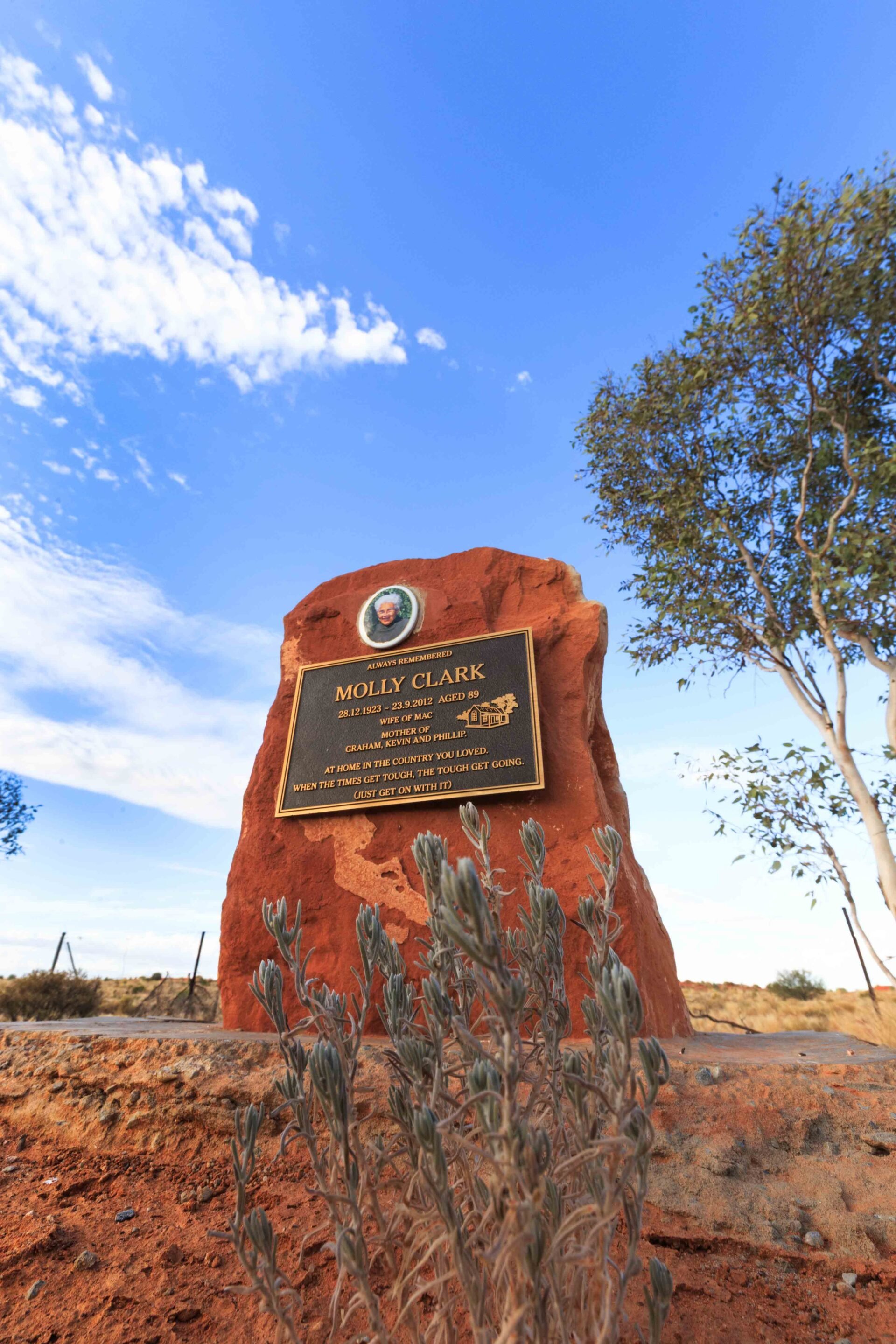
The first homestead was constructed of mud brick and iron, although little of it remains. The current homestead uses coolabah, mulga and acacia peuce for the frame and whitewashed corrugated and ripple iron for the walls and roof. The flooring in the original two-room section of the house is cement over ash and animal fat. The surrounding verandah was enclosed and partitioned to create extra rooms, while the kitchen and laundry/bathroom were added in the late 1920s.
When Molly sadly passed away in Alice Springs in 2012, she had lived at Old Andado for more than 50 years. At her request, she was returned to the homestead and laid to rest in a place she truly loved. Molly’s epitaph reads, “At home in the country you loved. When the times get tough, the tough get going.”
The campground is spacious and mostly flat, with sheltered fire pits scattered throughout. A rustic camp kitchen has running water, an old barbecue and benches for setting up your camp. When water is available, a refreshing donkey shower and flushing toilet are included in the camping fee. It is an excellent setup for such a remote site.
Exploring the remote tracks of the Red Centre offers a blend of history, stunning desert landscapes and rugged adventure. From the sunrise glow at Chambers Pillar to the relics of the Old Ghan Railway, Australia’s heart at the Lambert Centre and the historic Old Andando, each destination immerses you in outback isolation and beauty. A 4×4 is essential, but the
Trip Essentials – Red Centre 4×4 adventure
Region: Red Centre
Nearest Town: Alice Springs has everything you need for a remote trip, including fuel, supplies, and mechanical support. The Aputula Store in Finke sells basic groceries and fuel, but it’s best to call ahead to confirm availability.
Best Time to Visit: April to September offers cooler weather and more comfortable travel conditions. Be aware that roads may be closed after rainfall, especially in low-lying sections.
Accommodation:
- Chambers Pillar Historical Reserve – Two designated campgrounds with fire pits and pit toilets.
Fees: $10 per adult, $5 per child (5–17), or $25 per family. - Lambert Centre of Australia – Free bush camping. No facilities.
- Old Andado Station – Large bush camping area with a rustic kitchen (BBQ – BYO gas), scattered fire pits (BYO wood), flushing toilets, and a donkey shower (when water is available). $10 per person per night.
What to Take: A tyre compressor and gauge, puncture repair kit, firewood, plenty of food and water, and all waste removal supplies. Leave no trace.
Track Difficulty: The route is suitable for 4WD vehicles, off-road campers, and tough touring setups. Roads may become impassable after rain. Carry extra food, water, recovery gear, spares, and communication equipment such as a satellite phone or PLB.
5 Things You Must Carry:
- Tyre repair kit
- Air compressor
- Water
- Firewood
- A sense of adventure
We recommend
-
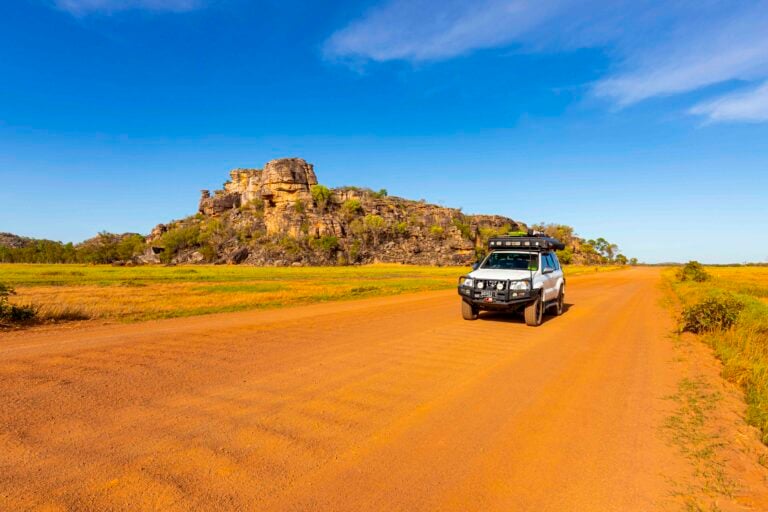 Explore NT
Explore NTVisiting Garig Gunak Barlu National Park (Cobourg Peninsula) – Everything you need to know
Perched at the northernmost tip of the NT mainland, this park rewards intrepid travellers with untouched beaches and dramatic landscapes
-
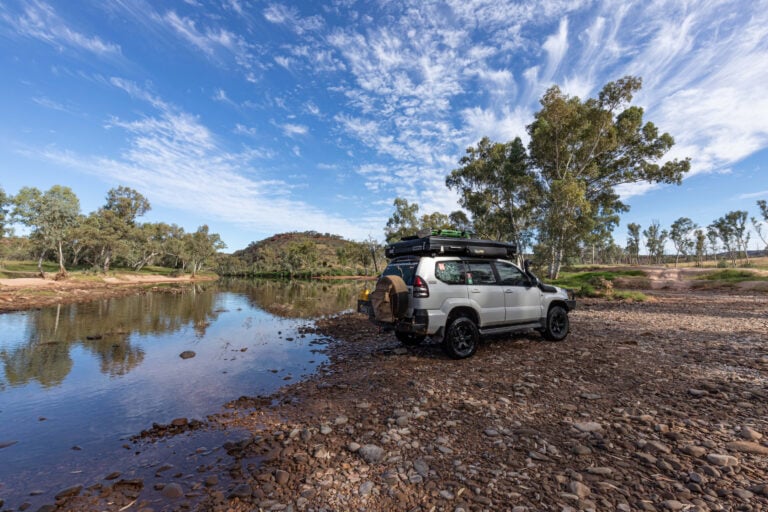 Explore NT
Explore NTTackling the Finke River 4WD route
This route offers an exciting journey through the Finke Gorge National Park, showcasing stunning desert landscapes
-
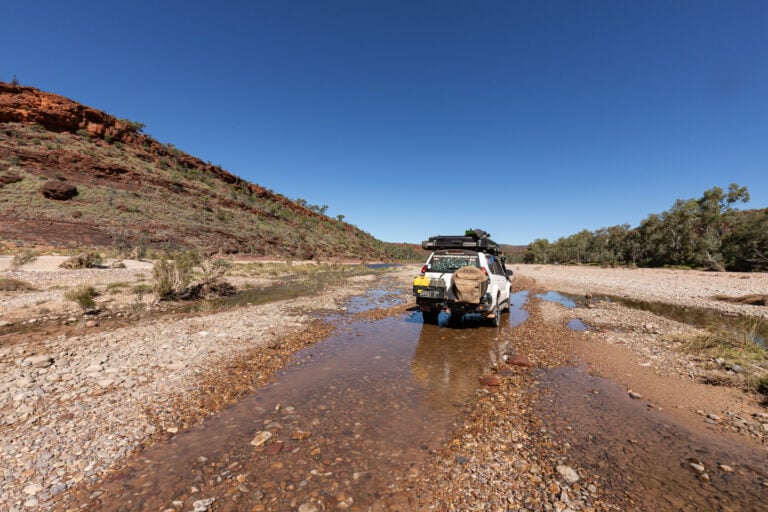 Explore NT
Explore NT4x4 trip to the stunning Palm Valley
Palm Valley is home to ancient and unique palms and the mighty Finke River, and it’s ready to explore


